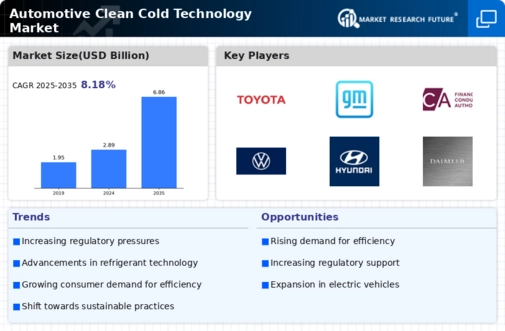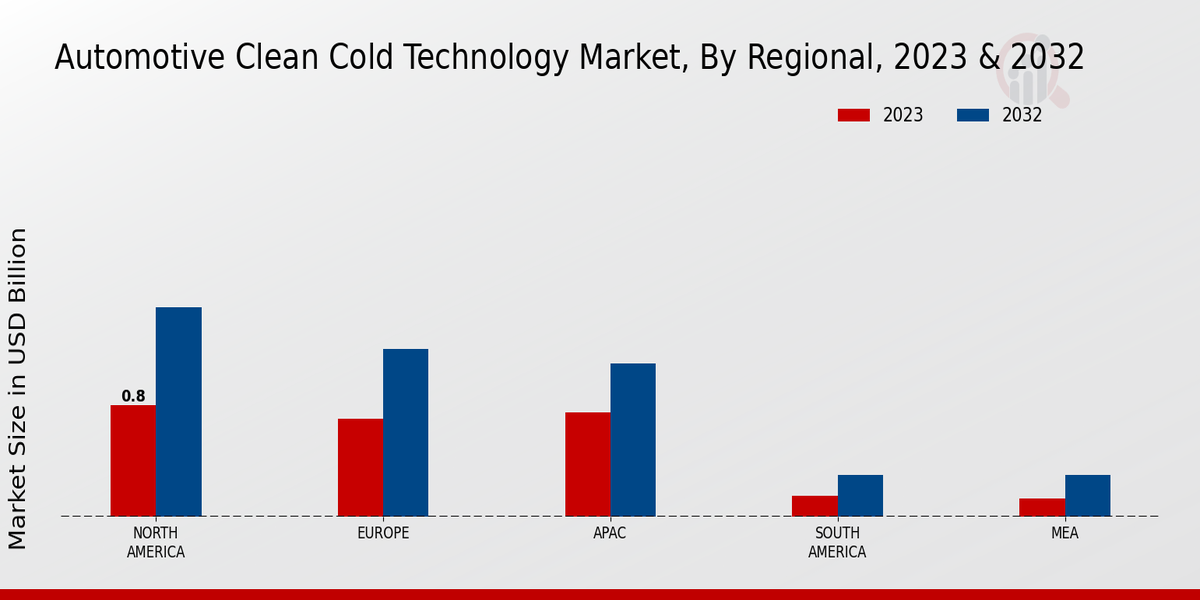The Automotive Clean Cold Technology Market has experienced significant transformation and growth as the automotive industry shifts towards sustainability and reducing environmental impacts. This market encompasses technologies and processes aimed at enhancing the efficiency of vehicles in terms of heating and cooling systems while minimizing their carbon footprint. In recent years, the demand for cleaner automotive technologies has surged due to stricter environmental regulations, consumer awareness, and the automotive industry's commitment to achieving ambitious emissions reduction targets.
Competitive insights into this market reveal a dynamic landscape where traditional automotive giants are investing heavily in research and development, collaboration with technology firms, and innovative manufacturing processes to secure their positions and meet global demands for cleaner, more efficient vehicles.In the context of the Automotive Clean Cold Technology Market, Toyota stands out for its robust commitment to sustainability and innovation. The company has established itself as a leader in hybrid technology, which significantly contributes to cleaner emissions and efficient energy use.
Toyota's strengths lie not only in its advanced research capabilities but also in its well-implemented strategies that prioritize the environment across its entire production line. The company's focus on developing and integrating clean cold technologies into its vehicle systems has set an industry benchmark. Moreover, Toyota's extensive global presence and existing customer loyalty provide it with a competitive advantage, enabling it to launch and market its clean tech solutions effectively.
The brand’s ongoing investment in alternative energy sources, coupled with its vast production experience, fortifies its stance as a driving force in the clean automotive technology sphere.General Motors is also a key player in the Automotive Clean Cold Technology Market, recognized for its innovative approaches towards sustainable automotive solutions. The company has committed to a significant transition towards electric vehicles and alternative fuel technologies aimed at reducing greenhouse gas emissions. General Motors' strength is its ability to leverage cutting-edge technologies and extensive engineering expertise to develop market-ready solutions that align with eco-friendly standards.
Through strategic partnerships with tech companies and investment in research initiatives, General Motors is creating advanced systems that optimize vehicle heating and cooling efficiencies.
The company has been proactive in adopting clean technologies across its product offerings and enhancing the environmental stewardship of its operations. This dedication not only serves to meet regulatory demands but also positions General Motors favorably among consumers who increasingly prioritize sustainability in their purchasing decisions. Consequently, it plays a pivotal role in shaping the future of the automotive clean cold technology landscape.



























Leave a Comment